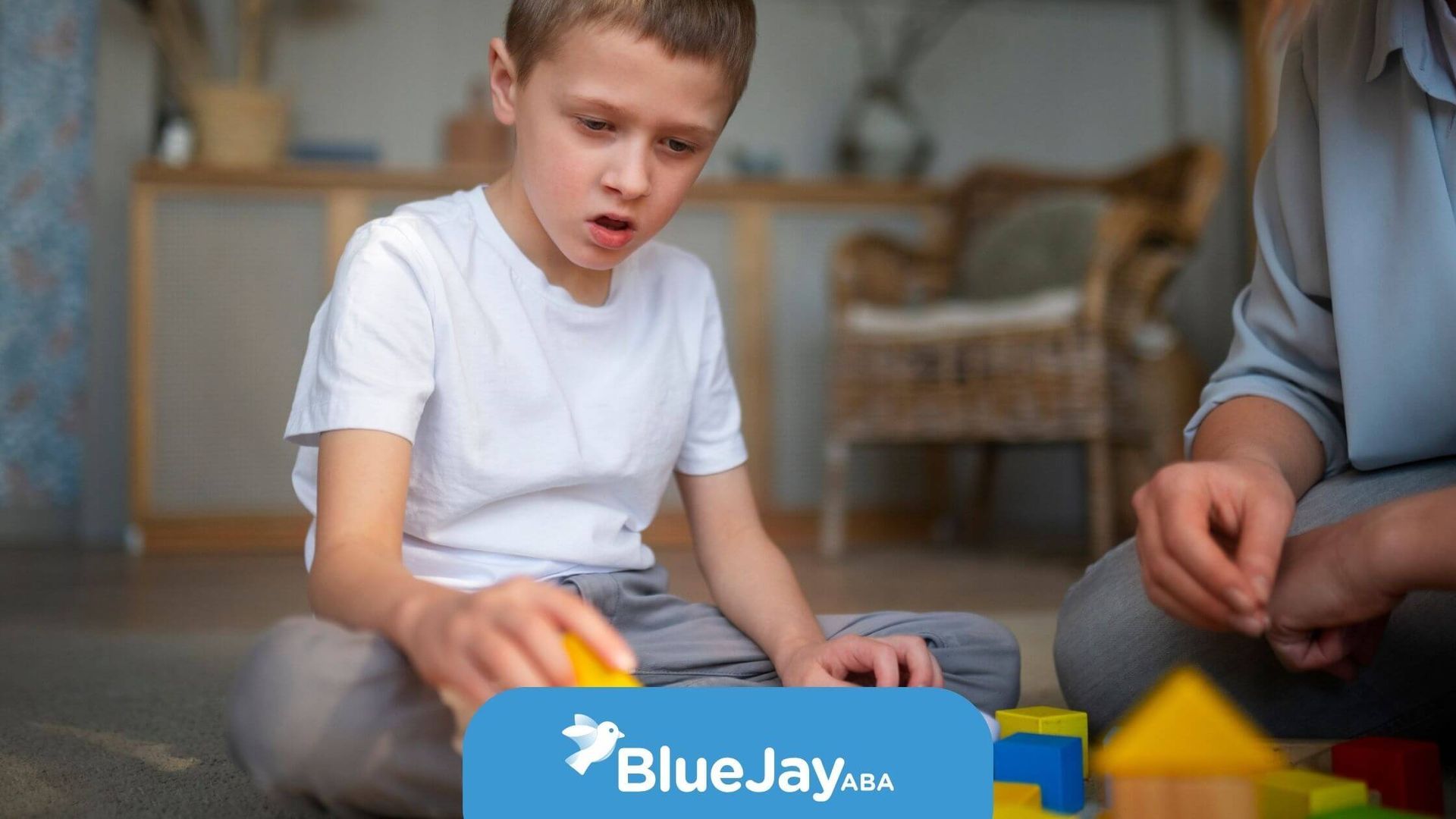Top Home Safety Tips to Protect Your Loved Ones with Autism
Key Highlights
- Autism families face unique home safety concerns, such as sensory issues, wandering risks, and sensory overload, which make tailored modifications necessary.
- Creating a sensory-friendly environment with calming colors, minimal clutter, and soft lighting helps support a safer home.
- Childproofing high-risk areas, such as kitchens, bathrooms, and windows, is essential for reducing potential hazards and preventing injuries.
- Security measures, like locks, alarm systems, and GPS devices, can help prevent elopement and wandering episodes.
- Teaching personal safety and boundaries through strategies like ABA therapy can help kids with autism spectrum disorder (ASD) navigate their environment safely.
Safety in the home is a priority for every parent, but it takes on a different level of importance when a child has autism. Unique safety challenges, such as the need to create sensory-friendly spaces and prevent wandering, require intentional planning and adaptations.
In a past case, I worked with a family who was struggling with sensory overload in their home. Through home-based ABA therapy, we introduced soft lighting, calming colors, and a clutter-free environment. Thanks to these changes, their child was able to experience fewer outbursts, and the family found peace in their new routine.
These modifications made a profound difference for them, and I’m excited to share these strategies with you.
Understanding Unique Home Safety Needs for Autism Families
Every home where there is a loved one with autism will have distinct safety needs. Individuals on the autism spectrum may experience sensory overload or show behaviors that put them at risk, like wandering or being attracted to potential hazards.
Sensory Issues and Safety Concerns
Children and adults with autism often have sensory sensitivities. They may find certain sights, sounds, or smells overwhelming, which can lead to stress and accidents if not managed appropriately. Creating a home that minimizes sensory triggers can help alleviate these challenges.
Behavior and Elopement Risks
Another common safety concern is elopement, where an individual with autism may leave the house without warning. This could be due to curiosity or a desire to escape overwhelming situations. Homes should be equipped with features that prevent wandering, such as locks on doors, alarm systems, and secure windows.
By addressing these unique challenges, families can create an environment that promotes safety and security, while also providing comfort and stability.
Common Safety Challenges in Autism Households
Safety in homes with autistic children requires extra attention and care. Due to specific behaviors and sensitivities, the risk of wandering and elopement is much higher, and the risk of accidents is elevated due to an attraction to unsafe objects.
The Risk of Wandering
Children with autism are more likely to wander away from home, which can place them in dangerous situations. This could be due to sensory overload or simply the desire to explore their surroundings.
Parents must be vigilant in using locks, alarm systems, and monitoring devices to ensure the safety of their children.
Household Hazards
Autistic children may be drawn to dangerous household items such as hot stoves, running water, or cleaning chemicals.
It's crucial to secure areas with these hazards, such as the kitchen and bathrooms, and to monitor their interactions with these objects closely.
Furniture and Climbing Risks
Children on the autism spectrum are often curious and may engage in climbing behaviors. This can lead to accidents, like furniture tipping over.
Parents should ensure that heavy furniture is anchored securely and that items within reach are safe to interact with.
The Importance of Sensory-Friendly Environments
Sensory overload can lead to heightened anxiety or meltdowns in children with autism. A sensory-friendly home can help reduce stress and promote emotional well-being.
Calming Visuals and Lighting
Soft lighting, such as dim lamps or string lights, can help reduce the overstimulation caused by bright overhead lights. Soft, pastel colors like blue and green on the walls can also create a calming atmosphere.
Minimizing Clutter
A clutter-free home is essential for creating a calming environment. Too much visual stimulation can cause sensory overload, so keeping spaces tidy and organized is a key step in maintaining a peaceful atmosphere.
Designated Quiet Spaces
Designating specific areas of the home as "quiet zones" can provide a retreat for children when they are feeling overwhelmed.
These spaces should be equipped with soft seating, noise-reducing headphones, and comfort items to help with self-regulation.
Creating Safe Spaces Throughout the Home
Making a home safe for a child with autism involves several practical modifications. This includes childproofing high-risk areas and ensuring that the environment is secure and comfortable.
Furniture Adjustments
Furniture should be arranged so that climbing risks are minimized. Move items that could be easily climbed away from walls and use childproof locks or bumpers where necessary to prevent accidents.
Childproofing High-Risk Areas
Areas such as the kitchen, bathroom, and windows need special attention. Installing safety latches, locks, and alarms in these high-risk areas can significantly reduce the potential for harm.
Visual cues, such as safety stickers or charts, can also be helpful in reminding family members of important safety rules.
Designing Calming Zones and Quiet Retreats
A calming zone is a dedicated space where children can retreat when feeling overstimulated. These spaces can provide emotional relief and support self-regulation, which is essential for children on the autism spectrum.
Key Elements of a Calming Zone
Ensure that the space is free of clutter and filled with familiar items that comfort the child, such as plush cushions or favorite toys. Noise-reducing headphones and soft seating, like bean bags or floor cushions, can create a warm and inviting atmosphere.
Encouraging Self-Regulation
This space can be a powerful tool for teaching children how to manage their emotions. By using visual aids, comfort items, and a soothing environment, children learn how to self-soothe and regain control over their feelings.
Preventing Wandering and Elopement Risks
Elopement is a significant concern for many families with children on the autism spectrum. Preventing wandering requires proactive measures and the use of technology to ensure the child's safety.
Security Tools and Devices
Installing locks on doors and windows, using GPS tracking devices, and setting up alarm systems can help prevent elopement. GPS bracelets, patches, or safety tags with contact information can be helpful in keeping track of a child’s whereabouts.
Addressing Triggers for Wandering
Understanding what causes a child to wander is crucial. Creating a routine for outdoor activities and giving the child ample opportunities to explore in a safe, controlled manner can reduce the likelihood of unsupervised wandering.
Security Measures—Locks, Alarms, and Tracking Devices
To maintain a safe home environment for children with autism, it's important to invest in security devices that prevent wandering and keep the home secure.
Locks and Alarms
Installing childproof locks on doors, windows, and cabinets helps ensure that a child cannot easily open them. Additionally, alarm systems with sensors that alert parents when doors or windows are opened can be invaluable.
GPS Devices and Tracking
GPS tracking devices, such as wearable bracelets or patches, are effective in tracking a child's location in real-time. This provides peace of mind for parents, knowing they can always locate their child if they wander.
Teaching Personal Safety and Boundaries
Teaching personal safety skills and boundaries is essential for helping children with autism navigate the world more confidently and safely.
Using ABA Therapy
Applied Behavior Analysis (ABA) therapy can be an effective way to teach children with autism basic safety rules. Visual aids like charts or checklists can help reinforce these lessons.
Positive Reinforcement
Reinforcing positive behaviors with praise or rewards can encourage children to adopt and retain these safety habits over time. Learning to respect personal boundaries, such as staying away from dangerous areas, is another crucial skill that can be taught through consistent, positive reinforcement.
Conclusion
Creating a safe, supportive home environment for families with autism is essential. By understanding the unique safety needs of children with autism, implementing childproofing strategies, and designing calming spaces, families can ensure that their home is a place of safety, comfort, and well-being.
Each family’s needs are unique, so it’s important to tailor safety measures accordingly.
Are you looking for more personalized support to ensure your home is a safe and nurturing environment for your loved one with autism? At Blue Jay ABA, we specialize in ABA therapy and can help you create tailored safety plans that address the unique needs of your child.
Contact Blue Jay ABA today for a free consultation and start making your home a safer place for your family!
Frequently Asked Questions
How can I prevent my autistic child from wandering at night?
Close supervision is key to preventing wandering. Implementing locks, alarms, and GPS tracking devices, along with a safety bracelet containing emergency contact information, can ensure your child’s safety during the night.
What are the best ways to make my home sensory-friendly?
Reduce sensory overload by minimizing clutter, using soft lighting, and designing calming areas. Small changes, such as using pastel colors and dim lights, can help create a peaceful environment for your child.
Are there specific emergency plans autism families should follow?
Yes, having an emergency plan in place is crucial. Include fire drills, emergency contact information, and special instructions for law enforcement if needed. The National Autism Association provides helpful resources for creating autism-specific emergency plans.
Sources:
- https://health.clevelandclinic.org/autism-elopement
- https://www.marcus.org/autism-resources/autism-tips-and-resources/what-to-do-when-your-child-elopes
- https://www.autismspeaks.org/autism-safety
- https://www.healthychildren.org/English/health-issues/conditions/Autism/Pages/Autism-Wandering-Tips-AAP.aspx
- https://www.autismspeaks.org/safety-plans
Related Posts






